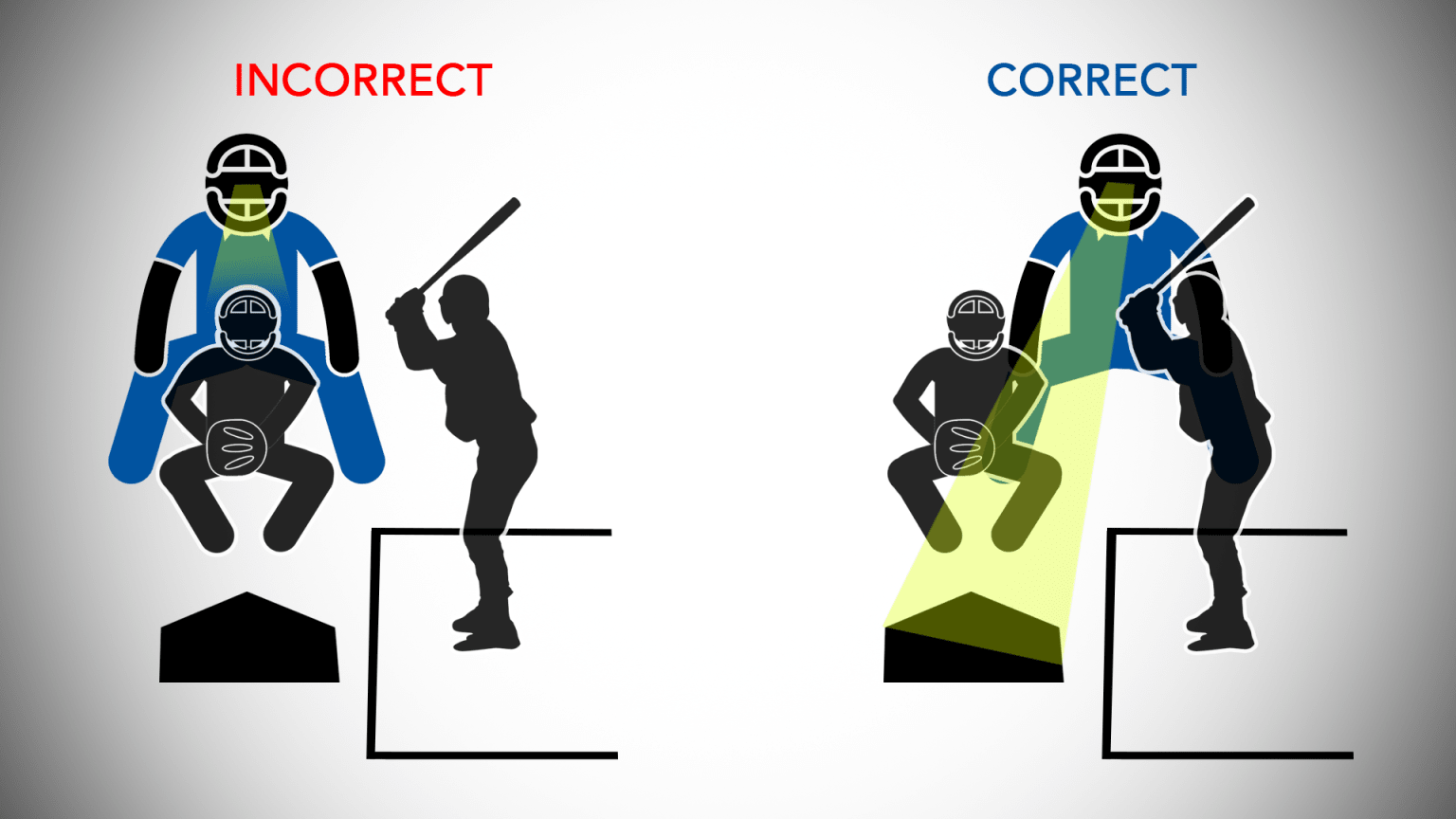Plate Mechanics: Explaining “The Slot”

The home plate umpire is responsible for establishing an athletic position for the purpose of ruling on pitches delivered by the pitcher, while also working in close proximity to the catcher and batter. Review the following videos for a thorough explanation of “The Slot” and other related plate mechanics.
To achieve effective positioning that will result in a consistent strike zone for the duration of the game, the slot is used. The slot is defined as the space between the chest of the batter and the catcher’s shoulder closest to the batter.
Without turning the head, the umpire is to use his eyes to track each pitch from the pitcher’s release point until the ball is received into the glove of the catcher. “Being in the slot,” affords the umpire an unimpeded view of the pitch, whether the pitch passes over home plate through the inner, middle, or outer part of the strike zone, or fails to pass through the strike zone.
An umpire should never place his hand on the back of a catcher or initiate any form of contact. To be “aggressive in the slot” describes a slight adjustment of feet that will create a better angle for the umpire to see the outside corner of the plate.
Feet Placement
The home plate umpire will step into catcher’s box and position himself/herself into the space behind and to the left or right of the catcher (depending on whether the batter is right- or left-handed). This area is known as the slot. To establish proper placement, the home plate umpire is to place his/her left foot in alignment with the batter’s back heel and his/her right foot in line with the heel of the catcher’s right foot.
Head Height
Once properly positioned in the catcher’s box, the home plate umpire is to lower the torso so that the chin is slightly above the crown of the catcher’s helmet, establishing a clear line of sight to all parts of the strike zone, including the outside corner of the plate, without turning the head.
Lock Mechanism / Resetting
Now in position, and with the torso lowered into position, establish a “lock” by placing the hand/hands in a “C’ position and placing one or both hands above the knee(s), behind the shin guards. Be sure to imitate the act of sitting on a chair when locking your arms.
A single-arm lock is to be done using the arm located behind the catcher with the opposite arm folded across the midsection/waist line.
If a double lock is used, then repeat the process for the single-arm lock, remembering to always keep your indicator in your left hand.
Once the pitcher begins to deliver the pitch, lower into the “set” position, using the single or double lock. After the pitch is delivered, track the ball to the catcher’s glove using your eyes and without moving your head. After the catcher has received the pitch, silently ask yourself this question: “Was that pitch a strike?” By making this step part of your routine, you will develop proper timing for making the ball-strike call.
After the ball-strike call is made, relax, step back and prepare to re-set for when the pitcher steps on top of the pitcher’s plate to deliver the next pitch.
Alternate Positioning
There may be times during a game when the slot location may change based on where the batter is in the batter’s box and the catcher is in the catcher’s box. Be aware that it is your responsibility to adjust your stance and head height to accommodate these alternate positions.